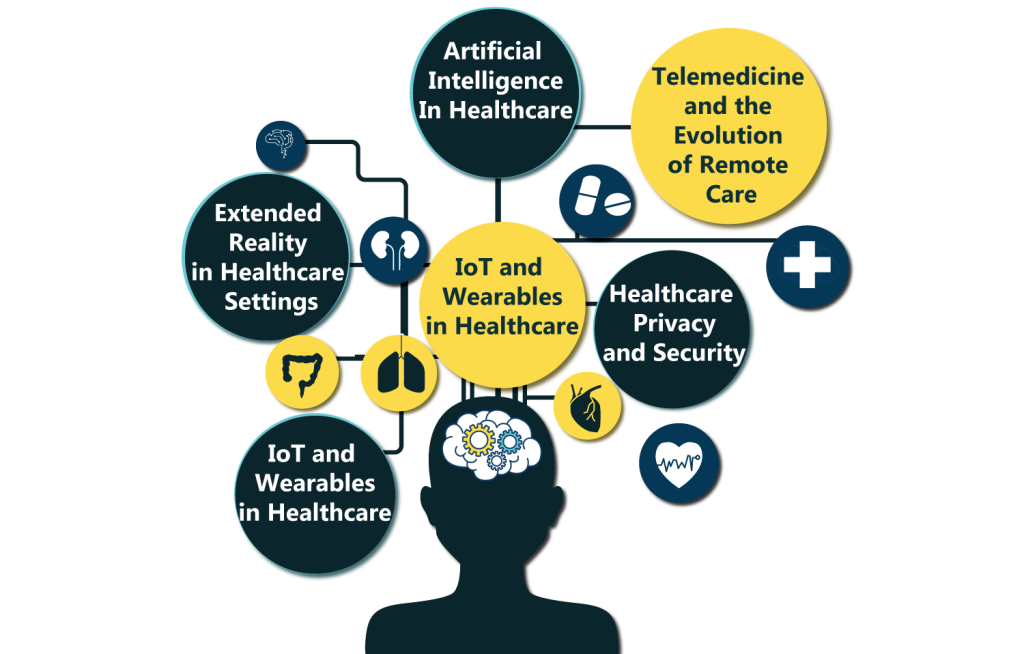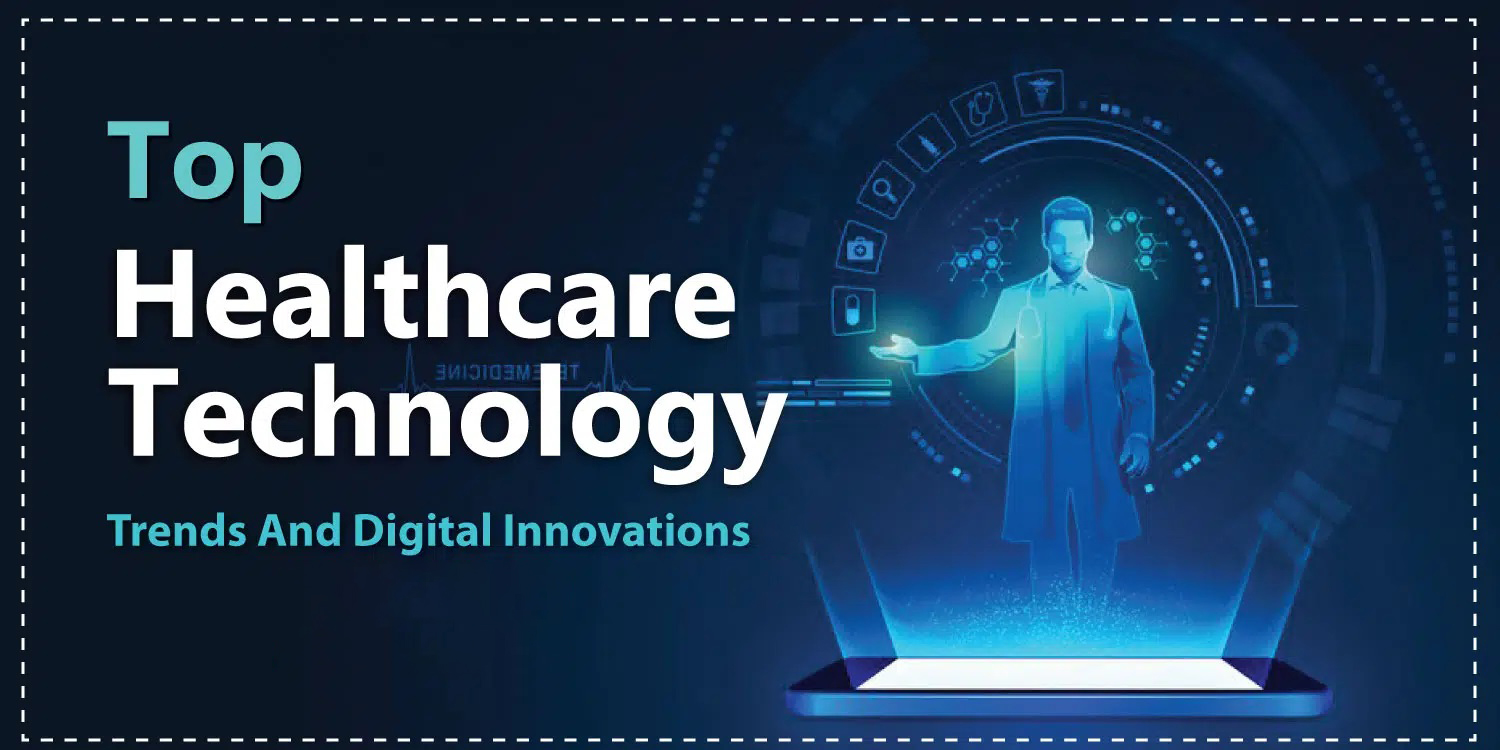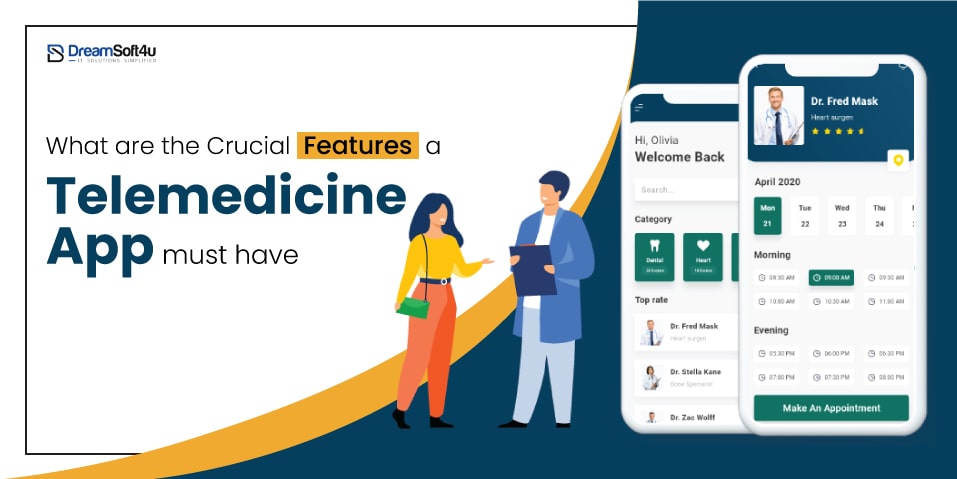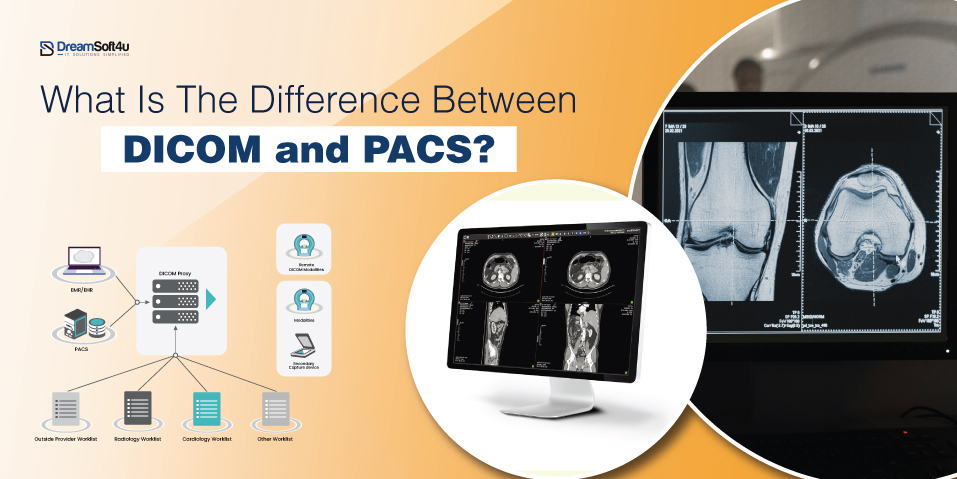COVID-19 had a great impact on different industries across the world, and they have forever been changed. The healthcare industry especially witnessed drastic changes. However, with the constant advancement in technology and methods necessary to support the high demand for assessing healthcare, the growing digitization of protected health information has helped a lot and evolved the industry in novel ways to deliver exceptional quality of service. As we are moving into the future, it is necessary to stay focused on the healthcare technology trends driving in the industry. Well, legacy software and infrastructure play a vital role in the success of modern hospitals and care centers. We must focus on evaluating how those systems can integrate with newer technologies or replace them with more reliable systems. The focus should be on improving efficiency, productivity, security, and performance without hampering reliability and accessibility.
Table of Contents
ToggleTop Healthcare Technology Trends
If you’re ready to explore top healthcare technology trends and innovations driving the healthcare industry towards digital transformation this year. This blog is for you. Let’s start with.

1. Artificial Intelligence in Healthcare
Artificial intelligence has created a buzz about being useful across industries, especially in healthcare.
AI’s Role Against COVID-19
COVID-19 has had a great impact on our society, but we managed to stay ahead of the curve thanks to cutting-edge technology. In fact, a company from Toronto, Canada, had earlier predicted that COVID-19 would spread globally. With the help of their application BlueDot, they became able to predict ascertained of dangerous outbreaks like COVID by scanning 100,000 media sources in over 65 different languages almost in real-time.
Whereas with the advancement of machine learning, a great deal of progress has been witnessed in the development of vaccines. By using machine learning to identify proteins, scientists have developed vaccines for COVID-19 in much shorter periods than ever before.
Furthermore, AI is also used in analyzing crowd temperature data. Due to this, it became easy to perform thermal screening and identify potentially symptomatic individuals. At the same time, AI-powered facial recognition gives the freedom of identifying individuals even if they are wearing a mask.
AI’s Role in Diagnosis & Drug Development
There are numerous AI-based applications available in the market which helps treat and respond to the pandemic. In fact, AI plays a vital role in improving efficiency in information processing and decision making. In the healthcare industry, machine learning is incredibly helpful in the development of new pharmaceuticals and in improving the efficiency of diagnosis processes.
For those treated for COVID-19, AI supports analyzing CT scans to detect pneumonia. Another innovation of artificial intelligence in healthcare is Project InnerEye from Microsoft. It is a radiotherapy AI tool that exponentially speeds up the process of 3D contouring of the patient by bringing down the processing time from hours to minutes. Project Hanover, on the other hand, is an AI system from Microsoft that performs the task of cataloging biomedical research papers from PubMed. This translates into reduced time for cancer diagnosis and assisting treatment with deciding over which drugs should be given to each patient.
AI in Mental Health
Artificial intelligence innovations are not only restricted to physical health but also assist healthcare providers in mental health as well. Researchers from MIT and Harvard University utilized machine learning to track trends and mental health in correlation to the COVID-19 pandemic. By using an AI model, they were able to analyze thousands of online Reddit messages to find out that the topics of suicidality and loneliness had nearly doubled over a period of time. With such instances and the utility of AI and machine learning, we can understand that these technologies have a great potential to handle the mental health of larger populations.
Natural Language Processing
Chatbots have a great potential to improve the efficiency of telehealth. Researchers at UCLA created a Virtual Interventional Radiologist (VIR) by combining chatbot technologies with AI systems. This innovation helps patients with self-diagnosis and assists doctors in diagnosing those patients. Chatbots utilizing Natural Language Processing isn’t ready to provide diagnosis, but they can assist in the process. Also, they can help obtain information from patients before proper treatment can begin.
The Key to Artificial Intelligence in Healthcare: Data
The key factor that boosts the success of artificial intelligence in healthcare is data. More importantly, training data. Software developed on machine learning will never outperform the quality of its training dataset. The higher the quality and breadth of the data we provide to the model, the better it will perform. It is necessary that your AI team should comprise of experienced software developers and data scientists that can work together to produce the best results.
2. Extended Reality in Healthcare Settings
Extended reality is a perfect blend of augmented reality, virtual reality, and mixed reality. It has great potential in the healthcare industry. From aiding surgery to telehealth applications, AR and VR technologies can be a helping hand in improving the healthcare industry.
Augmented Reality and Mixed Reality in Healthcare
Augmented reality and mixed reality that, in combination, forges useful virtual reality in healthcare. The best example of this combination is Microsoft Hololens 2 by surgeons. This device provides heads-up information to the surgeon while utilizing both of their hands during the procedure.
With such advanced gear, not only are the surgeries enriched but training sessions also get improved. Also, the head-mounted camera on the headset enables other doctors to observe the surgery and offer needed advice. With the rise of AR headsets, we can observe similar applications in the future as well. The more advanced software solutions will expand extended reality use in different types of surgeries into the future.
AR technology is not limited to headsets and operating rooms. It can also be used to aid nurses in finding veins and drawing blood from patients.
You must be aware of the fact that augmented reality development is heavily dependent upon artificial intelligence and specialized sensors to function. No matter your AR development is focused on mobile devices or other hardware devices, appropriate software, and data experts will be a matter of question. AR developers majorly focus on using AI with the software frameworks so that they can target hardware to make more successful products.
Metaverse: Future or Hype?
Facebook’s ambitious project metaverse that is primarily focused on social virtual reality experiences can set a milestone and open gates for a greater possibility of virtual reality in healthcare settings, if vastly overblown.
As of now, virtual reality in healthcare is only being used for training purposes. With virtual reality situations in healthcare, doctors can improve their skills and prepare for operations. Other than this, VR can also be used in treatment as well. A great example of VR in healthcare is the VR therapy being used by the Virtual Reality Medical Centre. It helps those patients suffering from phobias like fear of heights and PTSD.
Meta’s shift toward cartoon-style meetings might support VR therapy in the future, but its effectiveness compared to traditional conferencing is yet to be seen. Other than this, technologies in this sector like spatial audio have great potential to improve telehealth systems by adding a more immersive digital experience.
3. Telemedicine and the Evolution of Remote Care
Since the beginning of the pandemic in 2020, telehealth has come a long way. Healthcare providers regularly hold video conference meetings with their patients and give advice depending on their concerns. It would not be wrong to say that the infrastructure to support this initiative has been significantly improved. According to the reports, the telehealth market is likely to grow up to $185.6 billion by 2026. This simply showcases that the future of telemedicine is bright with the constant evolution of remote care.
Complying With Regulations
Before delving into the future of telemedicine or telehealth, we need to first focus on one of the most important issues with telehealth is HIPAA compliance. Well, at the peak of the pandemic in 2020, governments announced some sorts of relaxation. But, healthcare providers must consider HIPAA-compliant applications to communicate with their patients as they guarantee healthcare privacy and security in handling sensitive information of the patients and healthcare organizations.
Webrtc for Video Conferencing
WebRTC is one of the most important technologies to build a dedicated telemedicine app to adhere to legal privacy requirements. It is an open-source API-based system that connects web browsers and mobile applications and allows audio, video, and data transmissions. Therefore, it has become an essential and helpful teleconferencing feature.
Cloud Hosting and Data Storage
Storing data in most cloud storage services may be secure, but complying with government regulations on protected health information is not necessary. HIPAA compliant cloud hosting solutions are important for maintaining functionality and efficiency for any healthcare operation that requires electronic health records (EVER).
However, teleconferencing and data hosting isn’t the only required features for your healthcare organization. It requires other features such as appointment management, secure messaging, visit history, location services, security, healthcare provider reviews, wearable integration, and others.
Other than this, it has been found that some applications need to store fitness data from consumer wearable devices like Google Fit and Apple HealthKit. Therefore, maintaining integrations with these applications securely and efficiently can greatly help the patients and healthcare service providers.
4. IoT and Wearables in Healthcare
IoT and wearables in healthcare are getting popular rapidly and have great potential in the industry. Owing to their use in telemedicine and telehealth technologies, many have started to call this trend micro-processing the Internet of Medical Things.
According to the records, at the start of 2021, the number of connected IoT devices was 11.3 billion. The global IoT medical devices market is likely to reach USD 94.2 billion by 2026 from USD 26.5 billion in 2021. The healthcare industry is increasing the adoption of emerging technologies, the utilization of IoT cannot be ignored.
Wearables
The advancement of wearable technology is one of the most important innovations in the healthcare industry. The ability to monitor a patient’s status throughout the day remotely or for an individual to monitor their status is precious. According to a survey conducted by Deloitte, it has been found that 39% of users had a smartwatch. This showcases the potential of healthcare applications being used by these consumers.
One of the most basic yet useful things a smartwatch can monitor a person’s health is heart rate. Smartwatch’s utility is not limited to this only. These devices are also capable of monitoring a person’s physical health through pedometers and blood oxygen saturation. It is difficult to monitor low blood oxygen saturation without specialized sensors. Low blood oxygen saturation is a life-threatening condition; therefore, smartwatches came out as a savior with such sensors.
Not only this, smartwatches are getting advanced day to day to provide other health information and data like measuring blood vitals, variations in blood volume and composition, utilizing Photoplethysmography (PPG), an optical technology that has been miniaturized for use on smartwatches. Healthcare providers can utilize this data and help advise patients and complete diagnosis.
Other than smartwatches, bio patches, and smart hearing aids also have similar levels of potential and impact in the healthcare industry. Bio patches can better understand a person’s vitals without a smartwatch. At the same time, the utilization of artificial intelligence can help improve the noise isolation of hearing aids.
Smart Pills
The concept of the smart pill is one of the most profound applications for IoT technology in healthcare as it can transform The Internet of Things into The Internet of Bodies. These are edible electronics that serve as pharmaceuticals and provide healthcare service providers with valuable information about patients. The FDA introduced the first smart pill in 2017.
Creating Iomt Solutions
The healthcare industry is moving towards using a large number of microcontrollers in unison but communicating these computers with each other is a challenging task. Other than this, another challenge that needs to focus on is integrating devices of different manufacturers using their proprietary protocols to communicate with each other.
Besides, connectivity can also be an issue owing to various environmental factors that can interrupt communications. This issue can only be resolved through strengthening buffering methods on local microcontrollers. Security is always a concern as well.
DreamSoft4u Since 2003
Get your free quote by the top professionals.
5. Healthcare Privacy and Security
Privacy and data security are major concerns for any business in this digital era, irrespective of the industry. It implies the healthcare industry as well. According to the reports, Kroger pharmacy data was exposed in a data breach in February 2022 via Accellion’s FTA secure file-transfer service. This is just an example.
According to the data released via HealthITSecurity.com, over 550 organizations have suffered such data breaches last year and impacted the lives of over 40 million people.
Therefore, it is great to ensure that your organization is HIPAA compliant so that you and your patients won’t turn out to be victims of data breaches. If you serve patients internationally, your organization’s adherence to the GDPR policy is the corrective measure to avoid data breaches and offer healthcare privacy and security.
During the public health emergency like the COVID-19 pandemic, some healthcare providers were able to use software like Facetime and Skype to communicate with the patients besides not being fully compliant with government regulations. It is because the Office for Civil Rights (OCR) of the Department of Health and Human Services (HHS) in the United States announced relaxed enforcement policies for organizations during that period. But healthcare organizations need to stay compliant with the government regulations as to when the pandemic associated relaxations will be removed; you may attract hefty fines in the future.
To aid such healthcare providers, compliant video conferencing software is already available in the market. But in some cases where existing data does not integrate well with the available options, creating more customized solutions arises. Still, if a healthcare service provider wants to use an existing system to exchange ePHI with patients utilizing third-party software, in that case, they need to obtain a business associate exception from the vendor, which is comparatively a tedious and difficult task.
Also, there is no surety that the third-party program can fully protect patient data. And keeping information secure through remote doctor calls is difficult. Therefore, the ePHI data transmission must be in structured formats, and these calls can complicate the process.
6. Organ Care and Bioprinting Technology
According to the reports, the global market for organ transplantation is likely to touch $26.5 billion by 2028. This clearly indicates that organ transplant is an important part of the healthcare industry. On average, 2,000 heart transplants take place every year in the United States, as per Matthew J Everly. But what about the estimated over 50,000 people who need a heart transplant. How can these people who are suffering from heart disease be helped? It’s a matter of concern.
Improve Organ Care Technology and Extend Time for Organ Evaluation and Transport
The only way to resolve such an issue of helping an increased number of people with heart disease is by improving organ healthcare technology trends. This means improving the system responsible for taking care of organs outside the body. The Organ Care System from Transmedics is a great example of improved organ care technology. As of now, this system is being used at the Ohio State University’s Wexner Medical Center. The system is capable of preserving organs like the heart, lung, or liver outside of the body for several hours through proper care, heat, and provision of important nutrients.
There is a high possibility that we can see a big contribution of AI in automating the task of preserving or taking care of the organ for a longer period of time without any intervention from a doctor.
In addition to this, machine learning can play a vital role in better determining whether an organ being preserved is suitable for transportation or not. As soon as these parameters are determined, it can help save a life.
Bioprinting: For Developing New Organs
Other than improving organ healthcare technology trends, we need to explore other options. 3D-printed organs are a good option and have already made their way into clinical testing. Ears, corneas, bones, and skin, all organs are in clinical testing for 3D bioprinting.
In terms of process, bioprinting and 3D are no different. Firstly, a digital model of the tissue will be created; then, proper attention is needed to pay to the resolution, and matrix structure as the materials used here are literally like living cells called bioink. Thereafter, the organ’s functionality needs to be tested with simulation.
One can reduce the rejection rate of produced organs through 3D bioprinting by utilizing the cells of the patients seeking transplantation. These cells will initially be produced in an environment and then cultivated into the bio-ink, an essential element for 3D bioprinting.
Well, bioprinting has already been utilized in the past yet has not made its way to the mainstream. It is being estimated that AI can change the game by analyzing organs and recipients’ characteristics to create an organ compatible with the new host.
Benefits of Healthcare Technology Trends

Earlier, we mentioned healthcare technology trends, but we will get to know how these technologies benefit both the patients and healthcare service, providers.
Information Exchange in Real-Time
The healthcare technology trends, including the integration of emerging technologies like AI, Cloud, Blockchain, etc., enable access to complete records of patients without any hassle. Also, one can store patients’ records securely. This provides a seamless information exchange in real-time.
Flexibility for Clinicals and Patients
The healthcare technology trends like telemedicine technology and patient portals provide different ways to communicate with health professionals. In addition to this, wearable technology allows clinicians to calculate the well-being of their patients in different ways. With these technologies, healthcare professionals can easily record and analyze patients’ symptoms while they are living their lives normally.
Improved Patient Experience
Above mentioned healthcare technology trends let health professionals measure and store data of patients across systems of multiple health organizations. Also, these organizations can automate data analysis to review results and find out the issues that need to be addressed to enhance patient care and experience.
Looking for Healthcare Software Development with Latest Technologies Trends
We Can Assist! Right Healthcare Software Development Company is Just a Click Away
Conclusion
As time passes, healthcare technology trends will also continue to improve in every area. Although security will also improve with the advancements, the threat will also evolve parallelly. The only thing we can do to deal with such incidents is to fortify our defense system and continue with the trends to improve accessibility, efficiency, the productivity of the healthcare system to boost industry in the future.
FAQs
Q1. What types of AI solutions do you offer?
Our AI solutions for healthcare services include:
- AI Chatbots
- Smart AI workflow management
- Smart AI scheduling and payroll
- AI-Powered Radiology Assistance
- AI symptom checker
- And more
Q2. Can I hire your team for my ongoing project?
Yes, we offer flexible staff augmentation services too for healthcare organizations, startups, and others. Depending on your needs and project requirements, we can help you find the right team and expertise.
Q3. Can you design a blockchain-based EMR system for my hospital?
Yes, we can help you ideate, design, and implement a blockchain-based EMR system for your hospital, ensuring secure and transparent storage of electronic medical records.
Q4. Are your solutions data security compliant?
Yes, our solutions are compliant with key data security regulations including HIPAA, GDPR, and NABIDH, ensuring the highest standards of protection for your data.
Q5. Do you offer DICOM and PACS solutions?
Yes, we offer DICOM and PACS solutions for secure storage and efficient viewing of medical imaging data. Our systems also ensure seamless sharing and compliance with industry regulations.



















